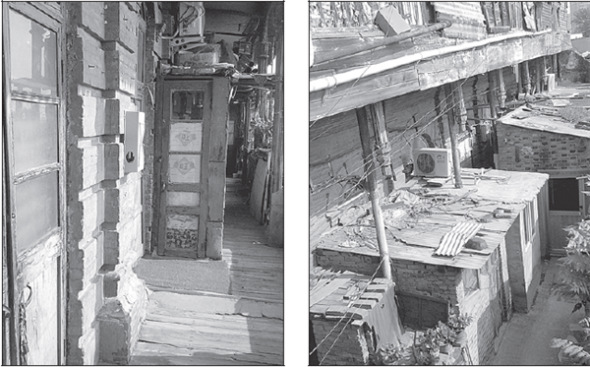
Badahutong, which literally means the eight great hutong, consists of Baishun, Yanzhi, Hanjia, Shaaxixiang, Shitou, Wangguangfuxiejie, Zhujia and Lishamao hutong. They are situated around the bustling Dashila area. (Photo: China Daily/Yang Feiyue)
The day I visited, there appeared to be next to no tourists in the neighborhood, and it took a while to find Sai's home with the help of several locals. It is hidden in Yushu Alley, which is just 66 meters long and is only three meters wide on average.
Sai's former residence is a two-story wooden house that stands out among surrounding bungalows. It is rusty and is covered with rotten wooden boards and rags.
"It looks much as it has looked for many years now," says a local, Li Zhengrong, 72, who lives in an ancient and cramped small room just behind Sai's house.
He pointed to a protruding sidewall and short wooden columns with fading paint suspended from the ceiling of the second floor.
"The sidewall was added later to reinforce the building after the Tangshan earthquake in 1976." The style of the columns is European, he says.
"So the building was a combination of Chinese and European elements."
When the old man heard I was about to visit Sai's place, with great gusto he began to let forth with anecdotes about her.
Her marriage to a Chinese envoy gave her international experience, and after she divorced him, she pursued her calling as a courtesan.
However, her ambition did not blind her to the plight of others, and she used her personal connections, language skills and diplomatic suaveness to persuade a German general out of slaying innocent people in the city, Li says.
"When she died, many prominent figures and civilians turned up to pay their respects as she was buried."
Li says that since he retired 20 years ago he has devoted a lot of time to studying Sai, most of his knowledge picked up from history books and official documents.
Nine families now live in the building in which Sai lived.
A flight of shaky stairs led me to the second floor.
Five of the families are from outside Beijing, says Zhang Yongman, 85.
She moved into the building in 1976 and has lived on the second floor ever since.


















































